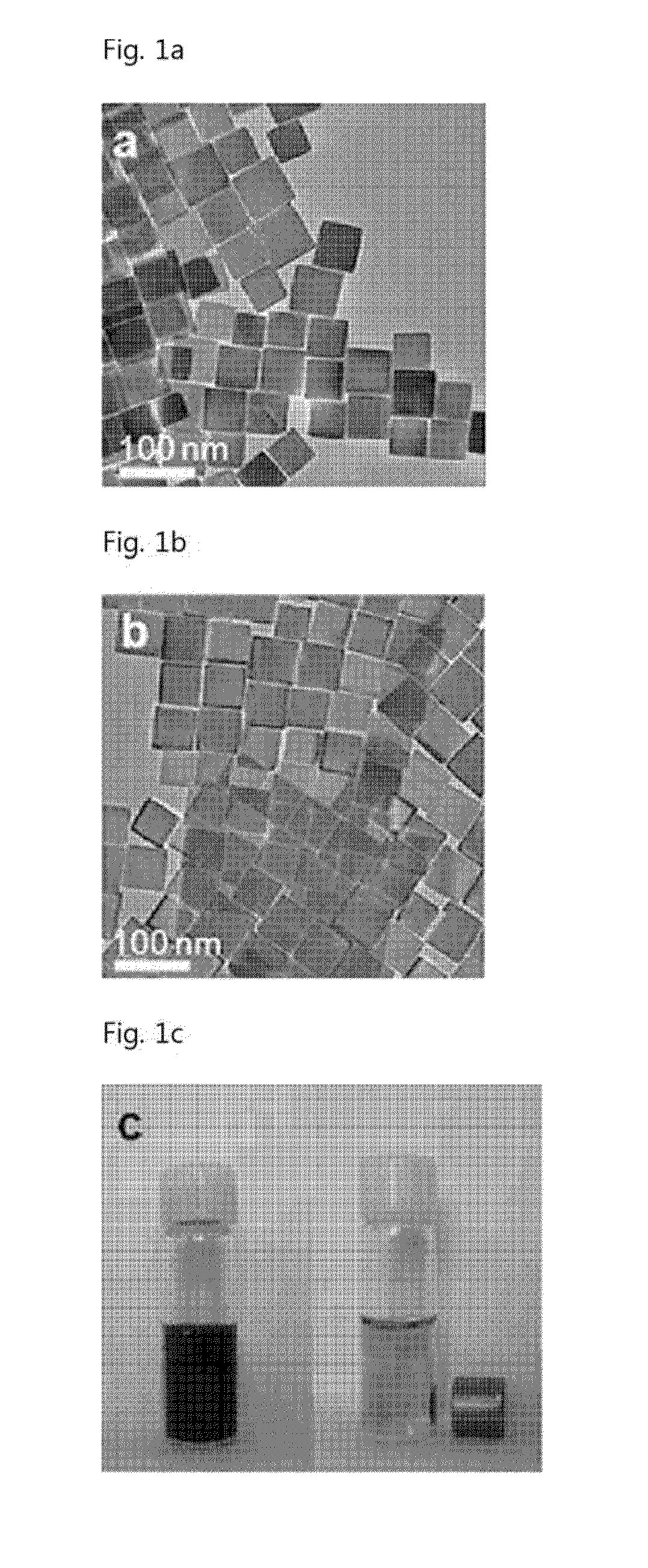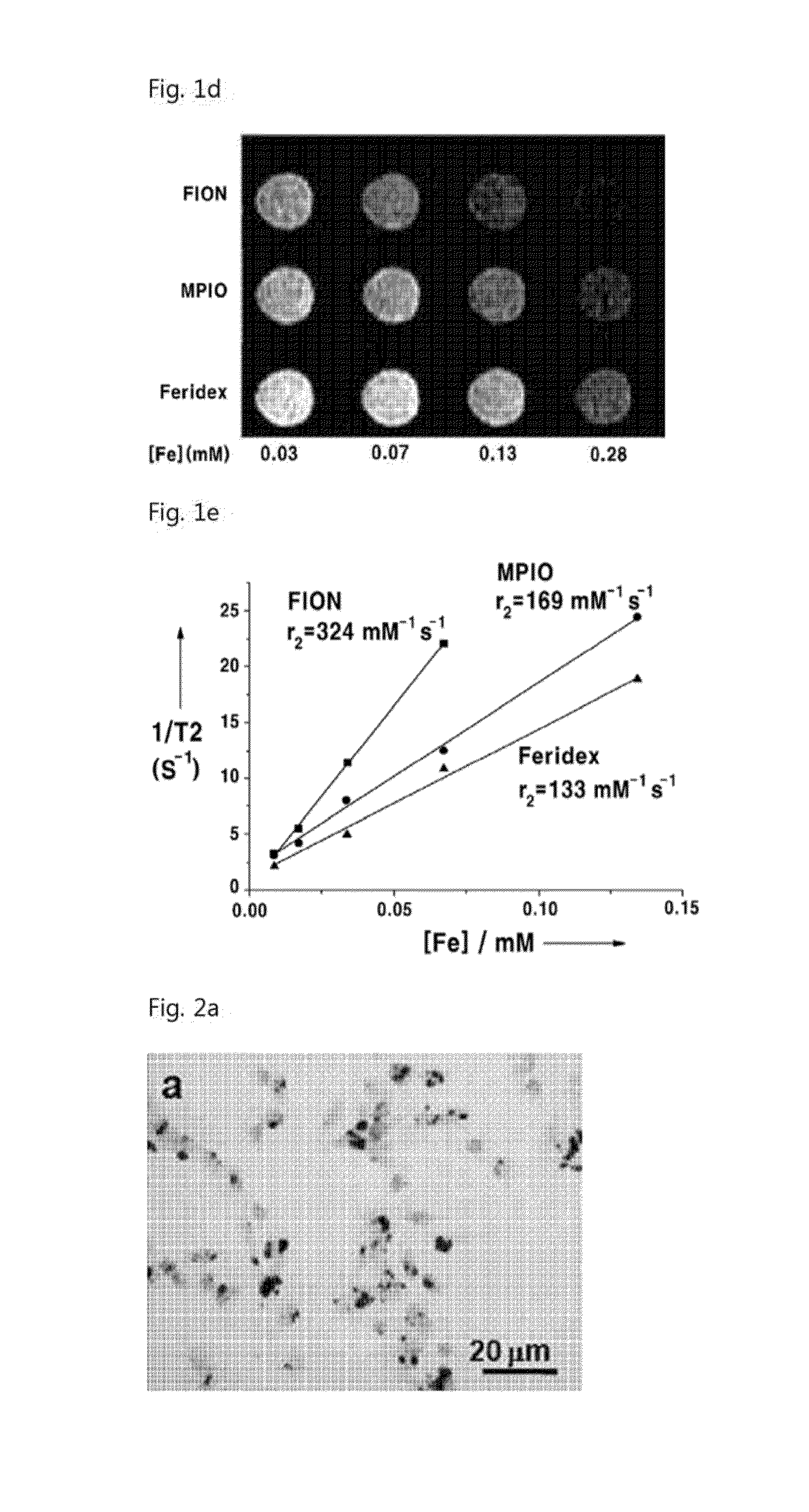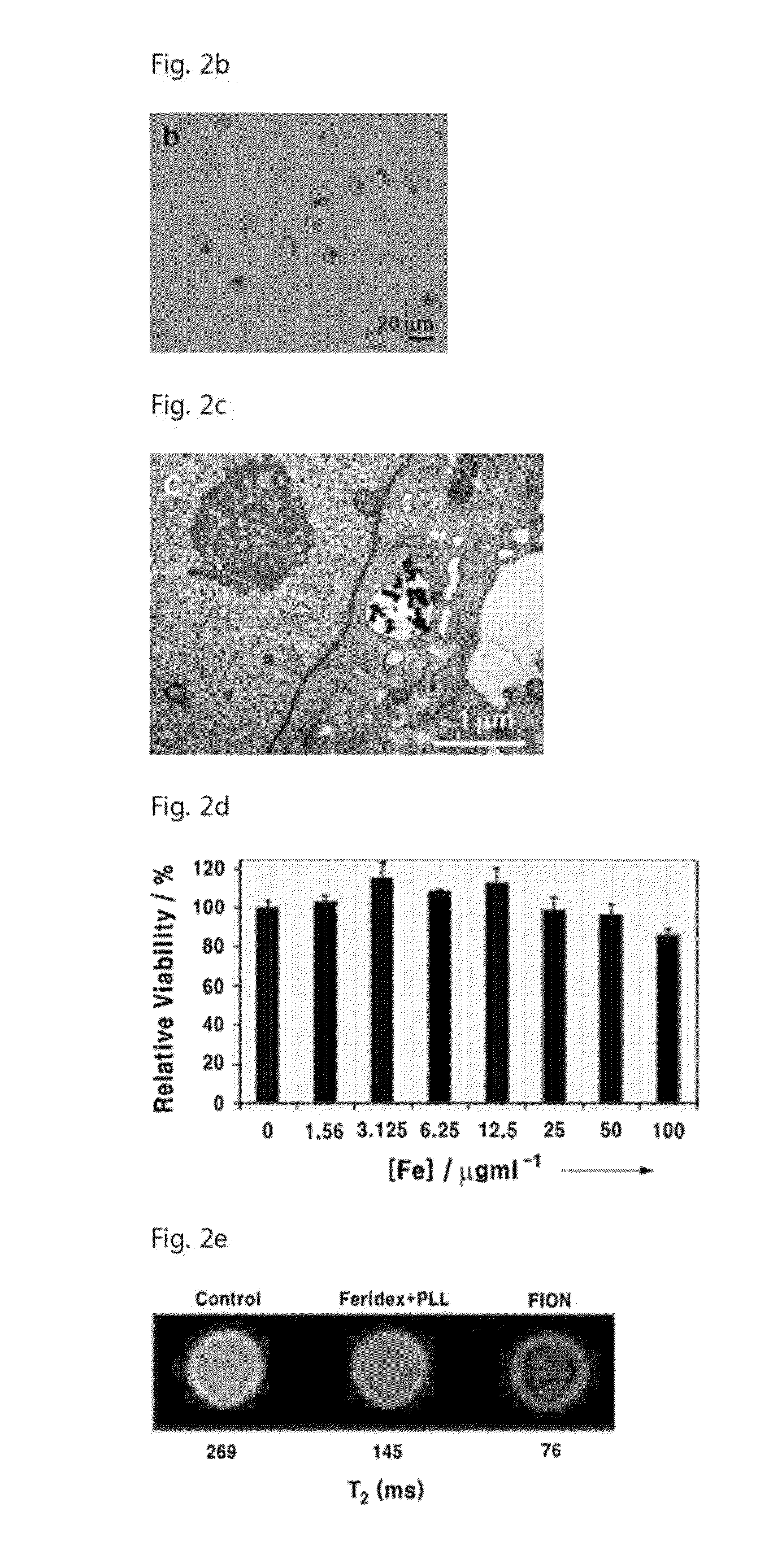Magnetic resonance imaging t2 contrast medium for cell contrasting, and method for manufacturing same
a magnetic resonance imaging and contrast medium technology, applied in the field of magnetic resonance imaging t2 contrast agent, can solve the problems of limited ultrasensitive in vivo tracking of a small number of labeled cells, low relaxivity of spios, poor crystallinity, etc., and achieve the effect of effectively taking up into a cell and effectively labeling various types of cells
- Summary
- Abstract
- Description
- Claims
- Application Information
AI Technical Summary
Benefits of technology
Problems solved by technology
Method used
Image
Examples
example 1
Synthesis of Ferrimmagnetic Iron Oxide Nanocube (FION)
[0073]Iron(II) acetylacetonate was added to a mixture composed of oleic acid and benzyl ether. Remaining air was removed by reducing the mixture solution via a vacuum pump. Then, the mixture solution was heated up to the boiling temperature of benzyl ether, while stirring the mixture solution. The mixture solution was maintained at the boiling temperature for 30 minutes and was cooled in air. Then, a mixture of toluene and hexane was added to the mixture solution, thereafter particles were separated by centrifugation. The separated particles were stored in chloroform.
[0074]In order to render the magnetic nanoparticles hydrophilic and biocompatible, the synthesized magnetic nanoparticles were mixed with 1,2-distearoyl-sn-glycero-3phosphoethanolamine-N-[methoxy(polyethylene glycol)-20001](mPEG-2000 PE, Avanti Polar Lipids, Inc.) in chloroform. After removing chloroform at 80° C., the nanoparticles were dispersed by adding water. E...
example 2
Measurement the Magnetic Resonance Imaging Ability of FION
[0076]In order to measure the magnetic resonance imaging ability, various concentrations of the nanoparticles which were synthesized in Example 1, were dispersed in 1% agarose solution. In order to measure T2 relaxation time of the nanoparticles, T2-weighted images were obtained by using a 1.5T magnetic resonance scanner Also, T2 relaxation time was measured from change of signal intensity with change of TE value, by using the Levenberg-Marquardt algorithm.
[0077]Since the synthesized nanoparticies have strong contrast effect, they show more distinguished contrast effect in T2-weighted images than the conventional superparamagnetic particles (FIG. 1d). As shown in FIG. 1e, the relaxivity of the FIONs was 2 or 3 times higher than that of Feridex which is currently commercialized.
example 3
Cellular Uptake of the Magnetic Nanoparticles
[0078]For cellular uptake of the magnetic nanoparticles synthesized in Example 1, the nanoparticles were cultured for 24 hours together with the prepared cells. The cells were detached from the culture plate by trypsin treatment, in order to remove the nanoparticles which were not taken up. Ficoll-paque was placed in the centrifugation tube, after then the cellular dispersion solution was added carefully on the Ficoll-paque layer, thereby separation between the cellular dispersion solution layer and the Ficoll-paque layer. When the centrifugation was performed at this state, the nanoparticles with high density were settled down under the Ficoll-paque layer, while the cells with low density were floated on the Ficoll-paque layer.
[0079]In order to stain the intracellular magnetic nanoparticles, the cells from which unabsorbed nanoparticles were removed were cultured in an 8-well chamber slide and were fixed with 4% paraformaldehyde. The iro...
PUM
| Property | Measurement | Unit |
|---|---|---|
| size | aaaaa | aaaaa |
| size | aaaaa | aaaaa |
| size | aaaaa | aaaaa |
Abstract
Description
Claims
Application Information
 Login to View More
Login to View More - R&D
- Intellectual Property
- Life Sciences
- Materials
- Tech Scout
- Unparalleled Data Quality
- Higher Quality Content
- 60% Fewer Hallucinations
Browse by: Latest US Patents, China's latest patents, Technical Efficacy Thesaurus, Application Domain, Technology Topic, Popular Technical Reports.
© 2025 PatSnap. All rights reserved.Legal|Privacy policy|Modern Slavery Act Transparency Statement|Sitemap|About US| Contact US: help@patsnap.com



